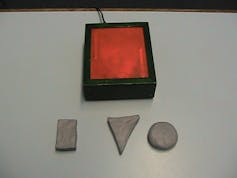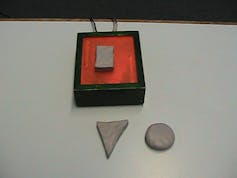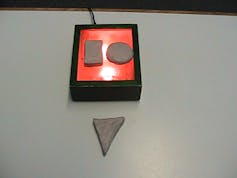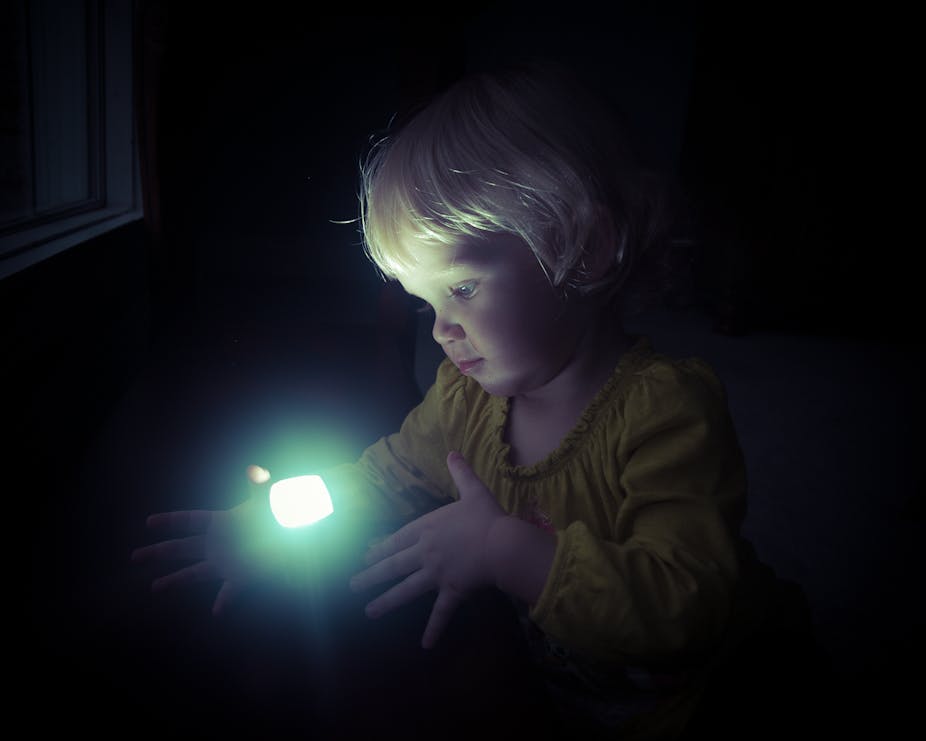Are adults superior problem solvers to children? Most people would say yes. From buttoning a jacket to operating a projector to multiplying complex numbers, our abilities exceed those of children.
And why shouldn’t this be the case? Our brains are more developed, we have more control over our bodies and we know more about the world. We have a lifetime of experience to help us reason about new situations and make judgements quickly. But could it be that sometimes our accumulated knowledge might bias our judgements and make us less sensitive to what we observe?
Our expectations should lead us in the right direction when events are consistent with our past experience. But in unusual situations, these same expectations could lead us astray. In these cases, might children, who likely have weaker (or perhaps different) expectations about what tends to be true, be the better problem solvers?
The project
I was recently involved in a research project where we found that in certain situations, children do indeed appear to be better or at least more open-minded learners than adults.
We compared pre-schoolers’ and adults’ ability to learn and make generalisations about cause and effect. We did this by introducing four and five-year-olds and college undergraduates to a small machine that lit up and played music when particular different-shaped objects (called “blickets”) were placed on top. But only some of the objects placed on the machine were blickets, and the participants were not told which were which.
Each participant watched us place individual objects and pairs of objects on top of the machine. Half of the participants saw a sequence of demonstrations that implied you only needed one blicket to make the machine go, and the other half saw a sequence that implied you needed two blickets. In each case, after watching these demonstrations and observing when the machine lit up and played music, the participants were asked to identify which of the objects were blickets.
For the first group of participants, blickets worked in isolation: as long as one blicket was on top, the machine would turn on. In other words, a single cause led to an effect. For example, participants saw that a circular and a rectangular object activated the machine when individually placed on top, while a triangular object did not.



For the second group, at least two blickets were needed to make the machine go. In other words, several combined causes led to an effect. For example, participants were shown that the circular and rectangular objects did not activate the machine individually, but together they did.
We then used new objects to show all the participants an ambiguous series of demonstrations where either a single-cause or a combined-cause rule could explain what was making the machine light up.
For example, we showed them that a diamond and a cone-shaped object did not work in isolation, but the diamond paired with a square object did activate the machine, as did all three objects in combination.
We were curious to see whether adults and children would assume that the rule on which they were trained applied to this ambiguous situation. In other words, we wanted to know if those participants who had been previously shown the single-cause pattern would conclude that only the square was a blicket; and that those who had been previously shown the combined-cause pattern would conclude that both the diamond and the square (and perhaps even the cone) were blickets.
The inflexible adults
There is a lot of past research to indicate that adults would come into our experiment expecting the machine to operate according to a single-cause rule. The question was how this expectation might affect adults’ ability to learn and generalise a combined-cause rule, and whether children have different expectations and so behave differently.
We found that most children and adults who were shown the single-cause pattern successfully learned it and assumed it applied in the ambiguous situation.
But most of the adults who were trained on the combined-cause pattern did not assume it could be applied to the ambiguous situation in the same way. Instead, they concluded that only one blicket was present (more consistent with the single-cause rule). On the other hand, the young children shown the same training pattern were more likely to conclude that at least two objects were blickets.
In short, pre-schoolers were more sensitive to the evidence they observed than college undergraduates. But how can young children be better than adults at solving this problem?
We proposed in our conclusions that adults had stronger convictions about how the machine would work that biased their interpretation of what they observed. Adults appear to view the evidence through the lens of their past experience, perhaps leading them to write off certain events as flukes and draw conclusions more consistent with their expectations than with their observations.
The flexible kids
Because children lack such strong expectations, they seem more influenced by the evidence. This allowed them to draw conclusions more consistent with their observations. The children were more willing to say that the machine worked in an unusual way.
Our results suggest that though our experience can make us faster and more accurate learners in many situations, children’s more open minds and ability to entertain unlikely hypotheses might give them an advantage in situations that are not in line with adults’ expectations.
For this reason, it might sometimes benefit us to ignore the wisdom we’ve gained from experience. As one undergraduate reflected after participating, “So if magic really did exist, children would be the first to realise this was true!”
Children and adults may also have performed differently because they reason about the world in profoundly different ways.Children may be more exploratory and more likely to change their minds, considering a wider range of possibilities including even those that are unlikely. Adults may be more hesitant to revise their beliefs. And even when they do so, they may only consider alternatives that they believe are likely to be true.
As my colleague Christopher Lucas said: “One big question looking forward is what makes children more flexible learners — are they just free from the preconceptions that adults have, or are they fundamentally more flexible or exploratory in how they see the world?”

